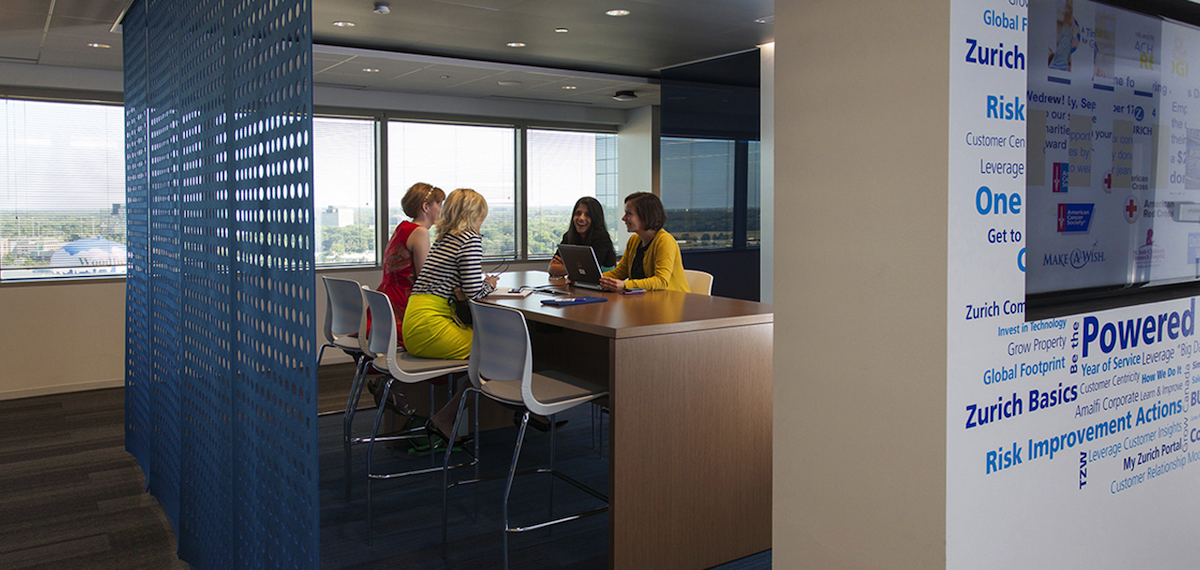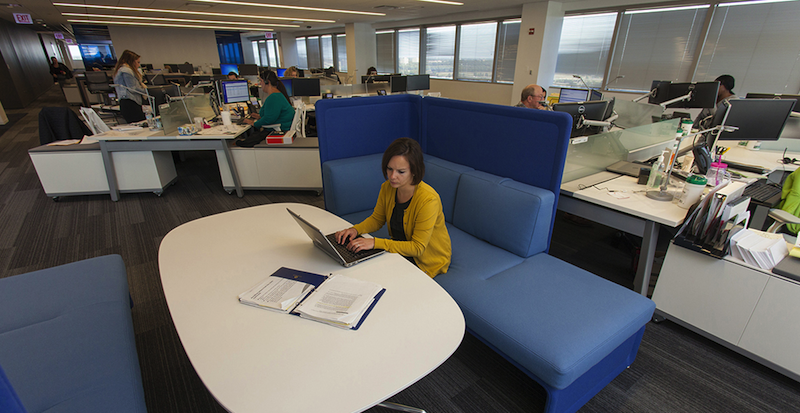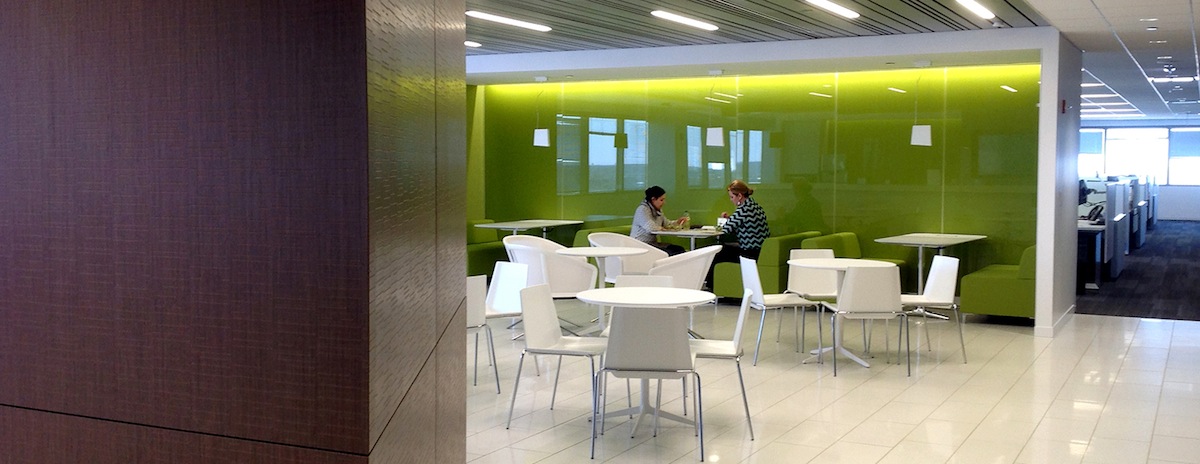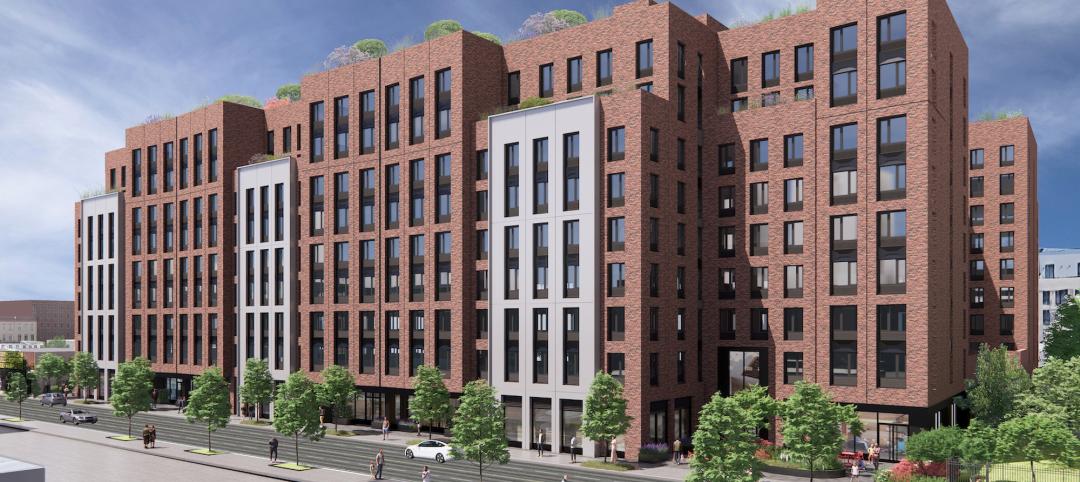Organizations seeking to empower their people and advance business goals need to stop listening to the never-ending debate about open vs. closed work environments and start engaging their people to achieve successful workplace strategies.
Rather than be confused by the constant stream of opinions, leadership teams contemplating workplace investments should start with powerful employee engagement strategies that drive results.
Our team at CannonDesign has developed proven processes and metrics that allow organizations to best understand employees’ needs and ultimately create environments that drive culture, innovation and performance.
"Zurich learned 57% of employees involved weren’t just happier with the prototype workplace but also enjoyed their work more."
Zurich North America is leading the way in this arena with its recent workplace pilot efforts. In advance of its new 750,000-sf North American headquarters, set to open in fall 2016, CannonDesign collaborated with Zurich to design and implement an extensive workplace pilot program with multiple prototypes that more than 150 employees were able to work in and test.
These employees spent three weeks working in each of four neighborhoods and sharing time between individual workstations and shared spaces throughout the floor. Each neighborhood featured different styles of desks, chairs, enclaves, conference room and informal meeting spaces that could be potentially integrated into the future headquarters.
Feedback was gathered from employees involved in the pilot program via pulse surveys, town hall meetings, and focus group discussions. The initial data indicates improved satisfaction and performance:
- Employees involved in the pilot program interacted within teams 19% more often while the average time people spent waiting for responses decreased 62%
- Satisfaction with the workplace pilot environment increased by 21% for all generations
- Employees were 64% more satisfied with the flexibility offered to use different spaces over the course of a day
- Zurich learned 57% of employees involved weren’t just happier with the prototype workplace but also enjoyed their work more
“We want to ensure we are creating the right design to meet employee needs, enabling them to be effective and productive,” said Jennifer Kyung, headquarters business lead at Zurich North America. “We committed to engaging with our employees on the design from the beginning knowing that highly engaged employees lead to better results.”
 Image: Cannon Design
Image: Cannon Design
Follett case study
Our collaboration with Follett, Inc. also drove measurable performance increases with its new headquarters thanks to extensive employee engagement. From the outset of its office relocation effort, Follett leadership met with employees through companywide engagement efforts, group meetings, and brainstorm sessions to gather ideas for the headquarters and also establish baseline metrics.
Key findings realized only 45% of Follett’s employees were happy with the previous offices (the national average is 60%) and 65% of employees desired alternate places to work away from their desks. Follett also kept employees engaged with focus groups, town halls and powerful change management programming to ease the transition to the new space.
As a result of Follett’s strategic efforts, the new headquarters—which offers different flexible workplace settings integrated into neighborhoods—is driving improved performance. Initial data collected shows overall satisfaction with the workplace has grown by 38% for all generations and functions in the organizations.
Other key areas seeing improvement are frequency of interaction with teammates (39% improved); communications amongst different groups (50% improved); and satisfaction with access to natural light (85% improved).
 Image: Cannon Design
Image: Cannon Design
Strategic Solutions
The same performance metrics and methods implemented by Zurich and Follett can be applied by other organizations in pursuit of strategic workplace solutions that drive results. These best practices help company leadership step beyond the confusing debates about work environment and refocus on the people who will work in these spaces.
Moreover, focusing on employee engagement will empower us to collectively emerge from the historical approach of creating workspaces and hoping they perform. Now, we can strategically identify goals, understand business objectives and measure workplace success.
About the Author: Meg Osman, Executive Director of CannonDesign’s global Corporate/Commercial practice, works with clients to implement significant real estate and workplace strategies that positively affect their business objectives. Her clients are leading Fortune 500 corporations across several industries. Osman is widely regarded for her understanding of the spectrum of demands facing today’s corporate client and has authored pieces and secured media placement across Fast Company, CEO.com, Inc., and Fortune.
More from Author
CannonDesign | Jan 3, 2024
Designing better built environments for a neurodiverse world
For most of human history, design has mostly considered “typical users” who are fully able-bodied without clinical or emotional disabilities. The problem with this approach is that it offers a limited perspective on how space can positively or negatively influence someone based on their physical, mental, and sensory abilities.
CannonDesign | Oct 23, 2023
Former munitions plant reimagined as net-zero federal workplace
The General Services Administration (GSA) has embraced adaptive reuse with Building 48, an exciting workplace project that sets new precedents for how the federal government will approach sustainable design.
CannonDesign | Aug 22, 2023
How boldly uniting divergent disciplines boosts students’ career viability
CannonDesign's Charles Smith and Patricia Bou argue that spaces designed for interdisciplinary learning will help fuel a strong, resilient generation of students in an ever-changing economy.
CannonDesign | Jul 10, 2023
The latest pediatric design solutions for our tiniest patients
Pediatric design leaders Julia Jude and Kristie Alexander share several of CannonDesign's latest pediatric projects.
CannonDesign | May 11, 2023
Let's build toward a circular economy
Eric Corey Freed, Director of Sustainability, CannonDesign, discusses the values of well-designed, regenerative buildings.
CannonDesign | Apr 10, 2023
4 ways designers can help chief heat officers reduce climate change risks
Eric Corey Freed, Director of Sustainability, CannonDesign, shares how established designers and recently-emerged chief heat officers (CHO) can collaborate on solutions for alleviating climate change risks.
CannonDesign | Mar 9, 2023
5 laboratory design choices that accelerate scientific discovery
Stephen Blair, director of CannonDesign's Science & Technology Practice, identifies five important design strategies to make the most out of our research laboratories.
CannonDesign | Feb 9, 2023
3 ways building design can elevate bold thinking and entrepreneurial cultures
Mehrdad Yazdani of CannonDesign shares how the visionary design of a University of Utah building can be applied to other building types.
CannonDesign | Jan 9, 2023
How modular solutions can help address skyrocketing construction costs
Modular builder Joshua Mensinger details three ways modular solutions aid in lowering construction costs.
CannonDesign | Dec 9, 2022
What's old is new: Why you should consider adaptive reuse
While new construction allows for incredible levels of customization, there’s no denying that new buildings can have adverse impacts on the climate, budgets, schedules and even the cultural and historic fabrics of communities.
















